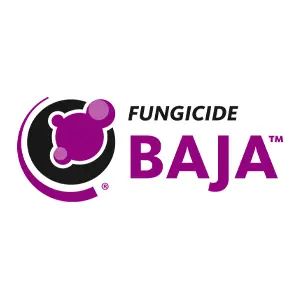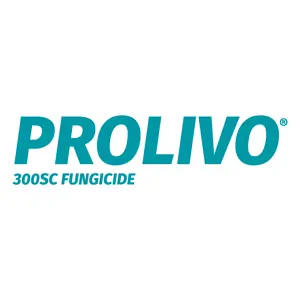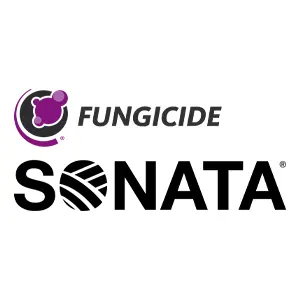
Five keys to keeping grapes disease-free
Five keys to keeping grapes disease-free
Growers in California and Washington lead the nation in producing grapes—a high-value crop that loses value when devastated by diseases. To help ensure an abundance of high-quality fruit, Wilbur-Ellis agronomists help growers navigate each year’s disease challenges. They recommend these early-season management practices with timely fungicide applications to prevent outbreaks from the start.
1. Choose the right product. Apply it preventatively and correctly.
After reviewing past disease occurrences, deciding which diseases are most likely to affect the crop and when, it’s important to choose products with the strongest control ratings for the diseases expected.
“Explore options that offer the greatest efficacy based on a combination of trial work and personal experience,” recommended Jeff Beeson, Wilbur-Ellis agronomist. Always carefully read and follow label directions for application timing, rate and other application requirements to ensure proper use and results.
Spray application that thoroughly covers the vines is critical, as well as product choice. Consider these questions to decide if a systemic or contact-based fungicide will achieve the best coverage.
- How large is the crop canopy?
- What is the development stage of the canopy?
2. Apply sufficient spray–but avoid waste.
Any fungicide that runs off the plant is lost and could contaminate groundwater. So, it’s important to apply the fungicide with enough water to achieve thorough coverage without creating run-off.
“Increase spray volume as the crop canopy expands and always spray every row,” said Steve Quashnick, senior agronomist, Wilbur-Ellis. “You can’t just spray every other row to cut time—that affects your coverage, which is crucial.”

Surfactants and deposition aids, like CROSSHAIR®, can also be added to reduce driftable fines and help the fungicide stick to the plant’s surface.
3. Support resistance management with product rotation.
Growers should avoid using products from the same Fungicide Resistance Action Committee (FRAC) groups, or with the same mode of action, twice before rotating to a product with a different mode of action. Read the label and when applying products multiple times in any given season, do not exceed the application limit for the active ingredient. While buying different products may add cost, it helps ensure fungicides available today remain effective for the long term. BAJA® and PROLIVO® fungicides are top-performing products for wine and table grapes.

- BAJA is a FRAC 7 and FRAC 9 systemic fungicide specifically designed to control powdery mildew and Botrytis throughout the growing season.

- PROLIVO (FRAC 50) also provides excellent preventative control of powdery mildew in grapes. It has unique redistribution activity on leaf surfaces along with vapor activity that protects crops beyond the day of application.
4. Choose application partners that help fungicides work harder.
“Tank-mix partners, whether a wettable sulfur or some form of microbial to partner with your conventional product, can get more legs from your materials and help break up the potential for resistance,” said Joe O’Gorman, Wilbur-Ellis retail manager and pest control advisor.
- Wettable sulfurs provide consistent, efficient disease control plus superior adhesion to leaf foliage—and they cost less than conventional sprays.
Microbials, or biofungicides, have shorter reentry and pre-harvest intervals (REIs and PHIs). The microorganisms in these products stimulate the plants’ natural defenses, promoting better plant health. SONATA biofungicide provides excellent control of powdery mildews and rusts; it fits in organic production systems and has a 4-hour restricted entry interval and a 0-day pre-harvest interval—so it can be used for late-season control to protect grapes as they near harvest.

Because these products are used for preventative control, a curative solution will be necessary if active mildew or rust is present.
5. Implement canopy and irrigation management practices to minimize disease development.
- Implement early shoot thinning and positioning techniques: Remove weak shoots during early growth stages to reduce canopy density and disease pressure and to optimize fruit yield and ripening potential. Exercise caution to preserve secondary shoots if the primary shoots have suffered cold damage.
- Don’t overapply fertilizers: It will be harder to get proper spray coverage to effectively manage powdery mildew and rot pressures if the canopy balloons out.
- Use soft materials to preserve beneficial insects and mitigate mite flare-ups.
- Properly irrigate to maximize water use efficiency and limit dense growth: Regulated deficit irrigation (RDI) is a practice that manages the application of irrigation water to improve fruit quality, reduce water consumption, and control canopy and shoot growth.

Always read and follow label instructions to maximize product benefits.
Following the label to apply the right rate at the right time is essential for effective disease prevention and management in any crop.
In grapes, pre-bloom is a critical time for disease control as growth of the vine isn’t yet fully developed.
“Product needs to be applied to every row to ensure proper coverage,” said Beeson. “Manufacturers generally recommend applying product at a slow speed of two to two-and-a-half miles an hour with the proper volume of water—which is normally at least 100 gallons per acre minimum.”
After selecting the right product to prevent or manage the fungal disease(s) threatening your vines, apply following label instructions and implement proper canopy, irrigation and resistance-management practices to keep your crop healthy and to produce a bountiful, high-quality harvest.
Trained agronomists are available to provide advice and guidance at each step. Learn more at wilburellisagribusiness.com or visit your local Wilbur-Ellis retailer for support.


